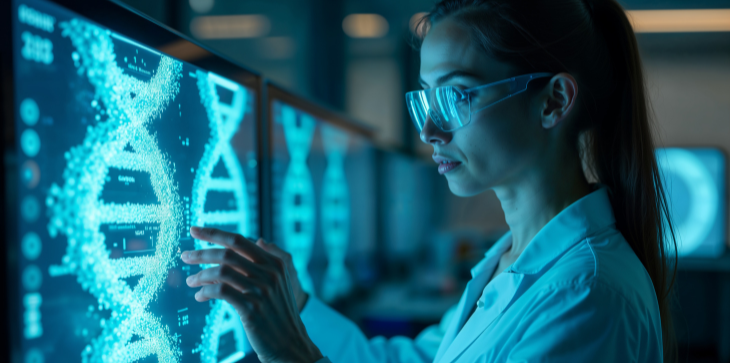Storing Data in DNA: The Next Big Leap in Data Storage
The digital age generates an ever-expanding tsunami of data. From personal photos and videos to complex scientific datasets, the demand for storage solutions surges relentlessly. Traditional methods, reliant on magnetic and optical media, struggle to keep pace, facing limitations in capacity, durability, and energy efficiency. Enter DNA, the very molecule that encodes life itself, as a revolutionary data storage medium. Scientists are now pioneering techniques to harness DNA’s extraordinary density and longevity, heralding what could be the next big leap in data storage.
Why DNA?
1. DNA boasts an unparalleled storage density.
Imagine fitting all the world’s current digital data into a shoebox – that’s the theoretical potential of DNA storage. A single gram of DNA can store hundreds of petabytes of information, far surpassing the capabilities of conventional hard drives. This astonishing compactness arises from DNA’s molecular structure, where information is encoded in the sequence of its four nucleotide bases: adenine (A), guanine (G), cytosine (C), and thymine (T).
2. DNA exhibits exceptional durability.
Under optimal conditions, DNA can persist for hundreds of thousands of years. Fossilized DNA, extracted from ancient organisms, testifies to its remarkable stability. This inherent robustness results from DNA’s chemical structure, which can resist degradation over time. Compared to the fleeting lifespan of hard drives, which deteriorate within decades, DNA offers the prospect of preserving data for millennia.
3. DNA consumes minimal energy.
Storing and maintaining data on hard drives requires constant power. In contrast, once synthesized, DNA needs no energy for storage. Researchers achieve the storing of data by encoding digital information in the sequences of those DNA bases. This creates a data system, that once created, is in a stable state. This characteristic makes DNA storage a potentially sustainable solution for the long term.
How does the process work? The journey from digital bits to biological code involves several intricate steps. First, engineers must translate binary data (0s and 1s) into DNA sequences. They map binary code to the four nucleotide bases, establishing a reliable correspondence. Following this mapping, they synthesize strands of DNA, each representing a segment of the encoded data. Then, these DNA strands are stored in a dry, cool environment, ensuring their stability. When data retrieval is required, scientists sequence the DNA strands, deciphering the nucleotide sequence and converting it back into digital information.
However, challenges remain. The cost of DNA synthesis and sequencing remains a significant hurdle. Although prices are falling, they are still considerably higher than traditional storage technologies. Scaling up production and automating synthesis are critical for wider adoption. Additionally, error rates in DNA synthesis and sequencing necessitate robust error-correction algorithms. Researchers are developing sophisticated coding schemes to ensure data integrity.
Another concern is the speed of writing and reading data. While reading data from DNA has improved considerably, writing data to DNA remains slower than conventional methods. Optimizing these processes is essential for practical applications. Further research also focuses on addressing these issues. Developing new enzymes, and streamlining the synthesis, and sequencing processes are all part of that research.
Despite these challenges, DNA storage shows immense promise across diverse sectors. Archival storage represents a prime application. Institutions that require long-term data preservation, like libraries, archives, and scientific repositories, stand to benefit from DNA’s exceptional durability. Additionally, data centers, facing the growing burden of energy consumption, may find DNA storage a more sustainable alternative. The use case regarding the storage of very rarely needed large data sets, that must be kept for extremely long periods is a prime situation for the use of DNA based storage systems.
Furthermore, DNA storage opens up possibilities for novel applications. For instance, researchers are exploring the concept of “molecular tagging,” where information stored in DNA can be embedded within objects. Imagine tracking a product’s journey through its supply chain by embedding its manufacturing data in its DNA. Or picture encoding medical records directly within a patient’s cells.
While DNA storage might not replace hard drives for everyday use, it presents a compelling solution for the long-term, high-density storage of valuable data. As technology continues to evolve, DNA storage will undoubtedly play an increasingly important role in shaping the future of data management. We are at the dawn of a new era, where the very essence of life becomes a medium for storing the vast knowledge of humankind.





